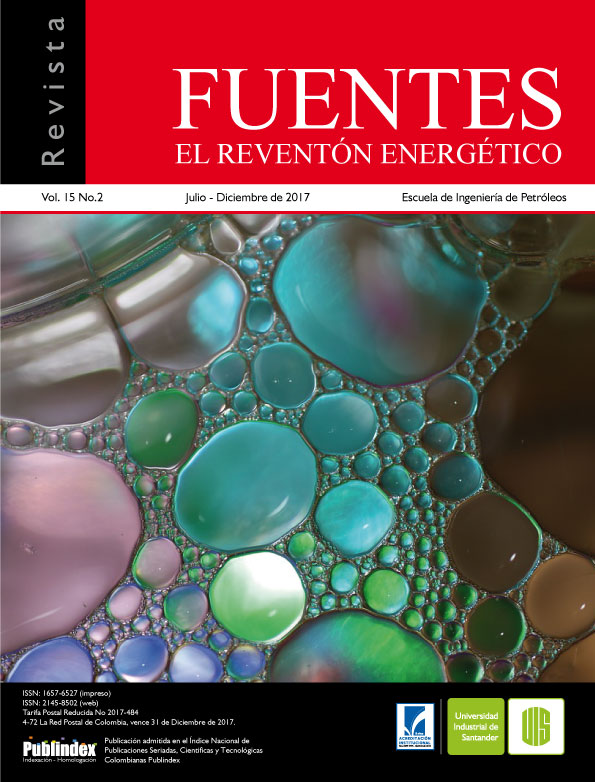Assessment of the necessary processes for the capture and storage of CO2 in the industry as measure of reduction of the environmental impact
Published 2017-12-15
Keywords
- Micro-algae,
- Carbon Dioxide CO2,
- Phosphorus,
- Carbon,
- Nitrogen
How to Cite
Abstract
The capture of CO2 has been a challenge through time; however, there are different methods which contribute to minimize the emission of carbon dioxide to the environment. There are different kinds of these methods: physical, chemical and biological. One of the biological methods is the “culture of micro-algaes”. The micro algaes are microorganisms of rapid growth that can fix carbon dioxide easier than any others biological systems, but is necessary an optimal environment for the development of these microorganisms.
The method is based in evaluate the behavior of micro-algaes in the capture of CO2, with different conditions and concentrations of nutrients as phosphorus and nitrogen for each experiment. This process allows establishing the optimal concentration for the capture of CO2. By means of statistical software version 7, which gives us an approximation of the concentrations of these nutrients, together with statistical estimates, charts, tables, highlighting which of the nutrients will have a higher incidence in the microorganism, and the production of biomass. With the analysis of the results, it is possible to make a difference of this method with other methods of geological capture, which are focused in energy and water consumption. Finally, with the analysis of costbenefit it will determine the viability of the project and stimulate the application in the industry as a measure of mitigation of the environmental impact
